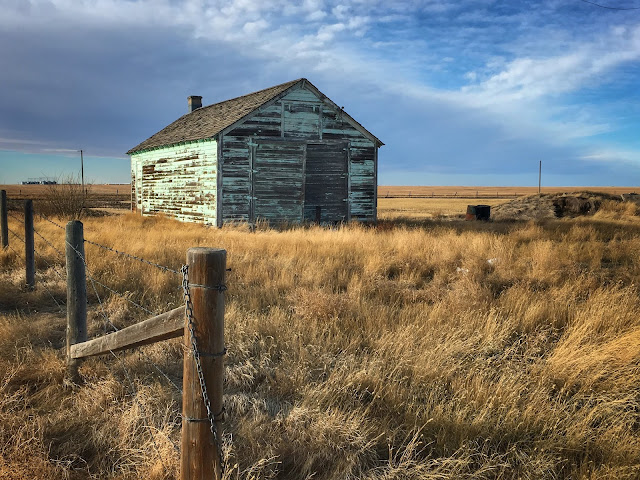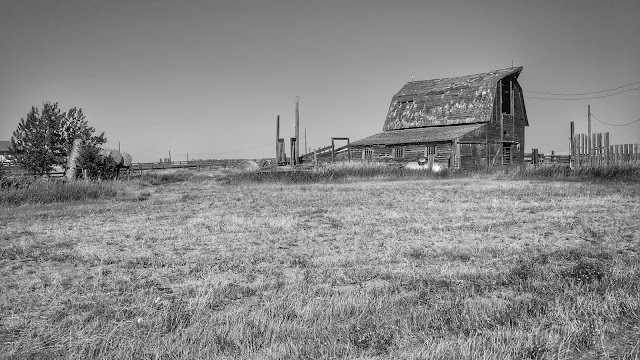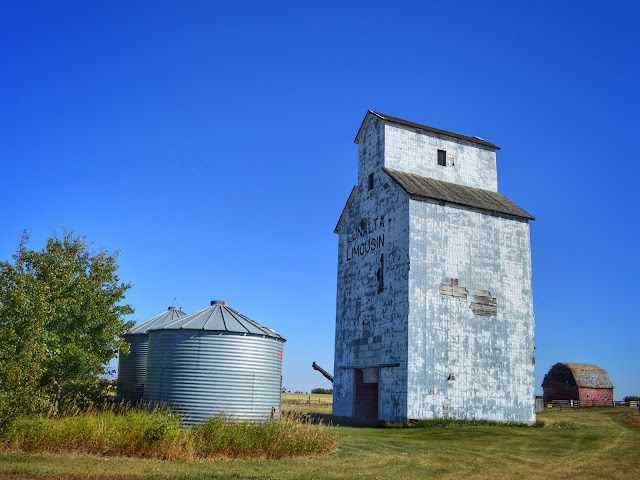On a brief trip into Saskatchewan, east of Lloydminster, I found this unique church and cemetery. It is the historic Shiloh Baptist Church and you can
feel the history here.
I'll start the story of the Shiloh people (Note: they were not referred to as this until many years later) after the American Civil War ended. Many thousands of former slaves migrated to the Oklahoma territory to live. They lived in relative freedom there, until 1907 when the new state of Oklahoma elected a segregationist government. This prompted many families to leave Oklahoma and follow the promise of free land for those willing to homestead in Canada's west. They came, hoping to live free from racism and segregation. 12 families settled here, north of Maidstone, SK in 1910. While other families continued on to form the community of Amber Valley, north of Edmonton, AB.
While the Shiloh settlers still faced some racism in Canada they were able to persevere through harsh conditions and near poverty, a familiar story of pioneer times. Also familiar is their spirit, hard work and determination. The original 12 Shiloh families built a community that grew to 50 families.
The church, built in 1912, is made of hand hewn square logs hauled from the North Saskatchewan river. The furnishings, benches and pulpit, are all hand made and can still be seen in the church today. The church looks mostly the same as it did when it was new. It's simple and beautiful and a testament to the community that was here.
As families moved away, the church which was the heart of the community for social and religious gatherings, was closed in the 1940's. The last burials occurred in 1945-46, but special permission was granted for burials in 1975 for George Mayes and again in 1987 for his wife Lucille Mayes, who were part of the 1910 settlers. The cemetery is now closed forever.
In 1971 white crosses where erected in place of the head and foot stones that were typically used to mark the graves. Many of the stones had been removed by people who did not know that they were markers in an effort to 'clean up'. A stone cairn, erected in 2002, lists the names of all 37 buried in the cemetery. The names had to be rediscovered after the original church ledgers were lost.
In 1991 the Shiloh Baptist Church and Cemetery was placed on Canada's Historic Places register.
This cemetery, the only African American cemetery in Saskatchewan, and the simple log church make this a unique and intriguing place.
In 2002 Leander Lane, who's great grandfather Julius Caesar Lane was instrumental in leading the group from Oklahoma, formed the Shiloh Baptist Church and Cemetery Restoration Society with 7 others. They have completed a historically accurate restoration on the church and, when possible, used materials and methods that match the period when church was built.
This place is a must visit for anyone interested in Canada's history. It is a piece of history that I didn't know about and am glad to have learned something new. Judging from the guest book, people from far and wide have stopped here to visit. In fact the person who signed the book the day before we did listed that they were from South Africa. History is everywhere, you just need to travel down the right road.
Some historic photos and information:
 |
| Undated photo from cbc.ca |
 |
| Mattie Mayes (photo from http://www.sachm.org/) |
Mattie Mays was born in 1858 in Georgia. She and her husband Joseph raised 13 children. They worked hard to see their children and grandchildren raised in freedom. She was respected in the community and helped as a mid wife if the doctor wasn't able to attend in time. She passed away in 1953.
Joseph Mayes was born in 1856 in Georgia. Not only was he a pastor in Oklahoma, but he helped lead the group to Canada and became a farmer in his 50's. He preached every Sunday as pastor of the Shiloh Baptist Church. He passed away in 1958 and is buried at Shiloh Cemetery.
There is an active
Go Fund Me page to raise funds for the upkeep of the church and cemetery.
Thank you!
References: historicplaces.ca; cbc.ca; rmeldon.ca; Regina-Leader Post; sachm.org;
Photos taken on September 16th, 2017.


















































